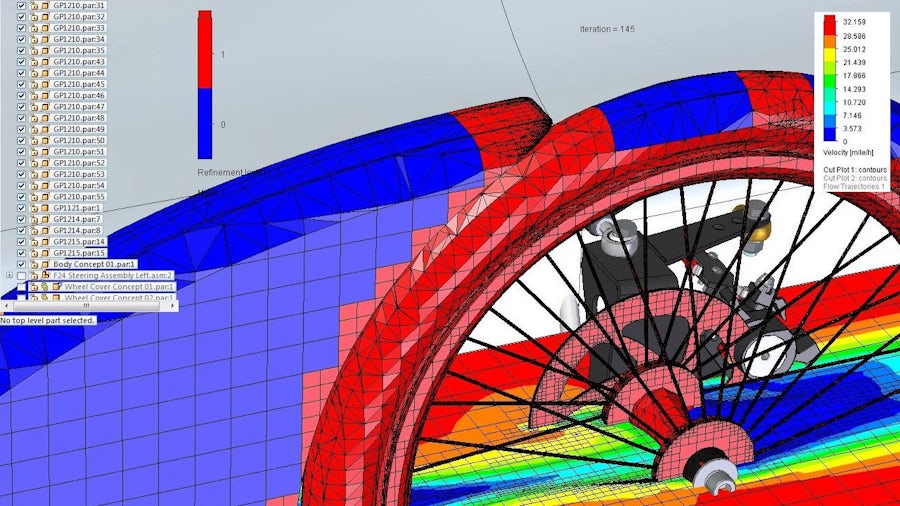How do you assess product performance early in the design process and improve return-on-investment (ROI)? Moving simulation and analysis into early design stages, promoting collaboration and knowledge sharing between analysis experts and design engineers, can help you design to specification while reducing overdesign.
All sorts of simulations, including computational fluid dynamics (CFD) analysis, can be used in the early design stages. The earlier simulation can be done in a design process the lower the cost of change is with higher room for cost reductions. In this eBook, you’ll learn five best practices for CFD analysis in the design process, including front-loading simulation to guide design decisions, improving collaboration between simulation and design, and reducing costs to increase ROI.
What is Computational Fluid Dynamics (CFD) Analysis?
CFD is a well-established computer-aided engineering (CAE) simulation technique with almost 50 years in the commercial sector. CFD is based on numerical methods for solving the fundamental Navier-Stokes equations that govern fluid flow, heat and mass transfer. CFD analysis, like many other types of analysis, can be used in the early design stages. The earlier simulation can be done in a design process the lower the cost of change is with higher room for cost reductions.
Increase Productivity with Frontloading CFD
Simulating early and often is important. The right tools must be available at the right time so the information can be accessed for early evaluation, a practice called front-loading. Front-loading CFD simulation allows you to examine trends and dismiss less desirable design ideas when the cost of change is lower. Along with using simulation early on, engineers must simulate often to keep up with the speed of design changes. By iterating rapidly, engineers can discount the less attractive ideas and innovate more.
Reduce the Number of Prototypes and Optimize Cost with Virtual Validation
Virtual validation is the process engineers and designers follow using computer-aided design (CAD) and CAE to implement a 3D version of a product to test and approve validity. This includes simulation of products in multiple environments and conditions to make sure they work properly. As manufacturing processes increase in complexity, virtual validation can help companies plan, design and implement their systems before investing significant capital.
Read the ebook today for five tips for CFD in the design process that you can put into practice right away.
Learn more about Computational Fluid Dynamics (CFD) Analysis in Solid Edge
Simcenter FLOEFD for Solid Edge supports flow simulation with an embedded
computational fluid dynamics (CFD) simulation tool for easy, fast and accurate
fluid flow and heat transfer analysis. Learn more about this capability and
find more resources on the Solid Edge site.
